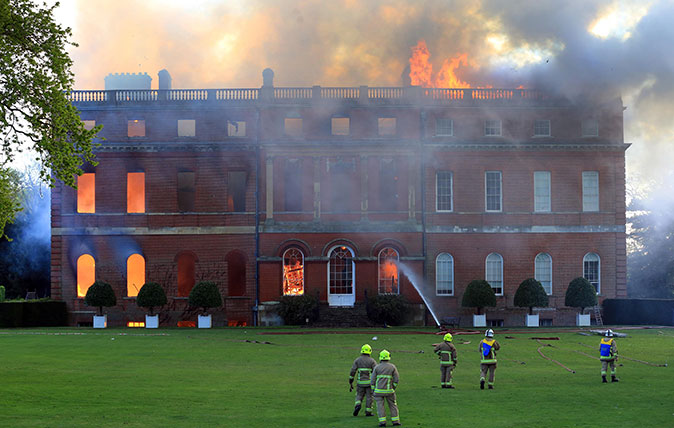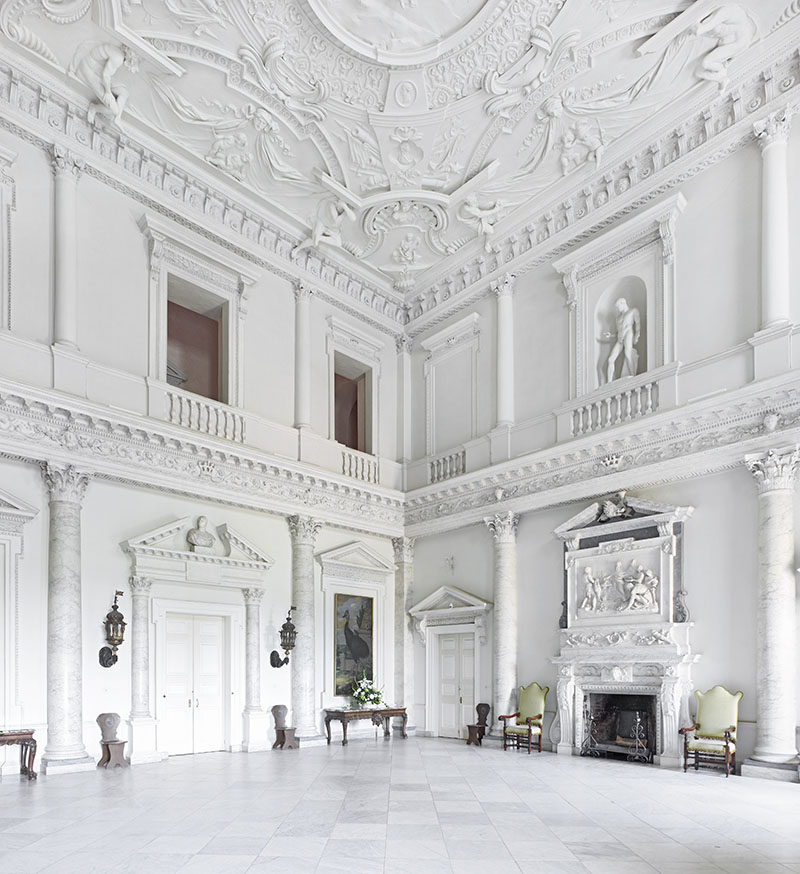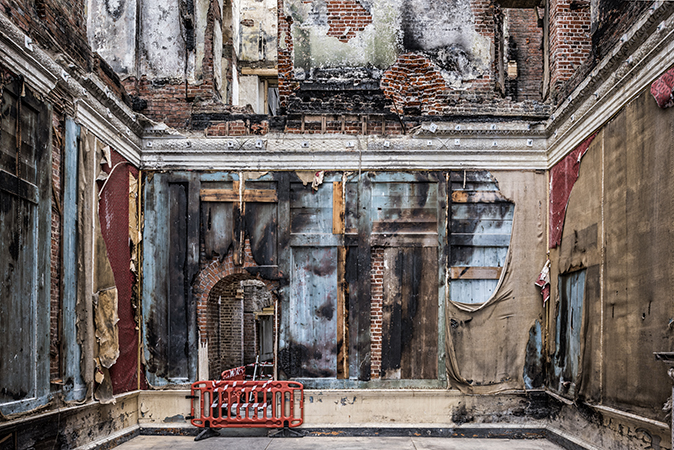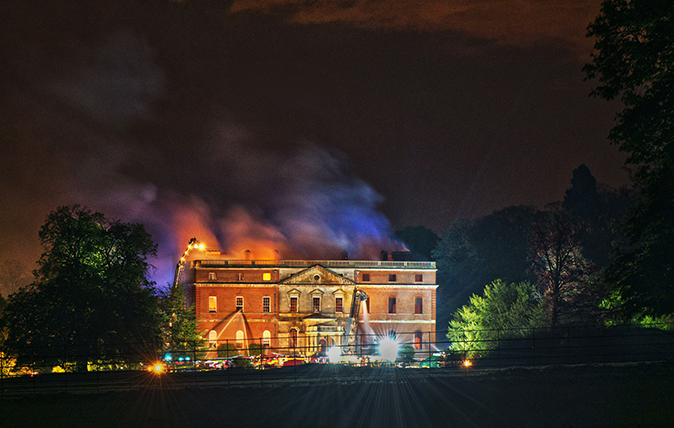What next for Clandon Park? Time to breathe life back into this great house
Simon Jenkins, former chairman of the National Trust, considers the next steps for Clandon Park in Surrey, two years after the fire that reduced it to a ruin.


What should be done with Clandon? Two years have now passed since fire destroyed most of the interior of this superlative Georgian mansion. Two weeks ago, a shortlist of six architects was announced for its restoration. However, as this magazine’s Architectural Editor, John Goodall, indicated in Country Life last month, choosing an architect is one thing, deciding what they do next is another.
As all buildings grow old, and some come close to death, these choices are never easy. Most great houses, like great churches, reflect many periods in their history and are the more intriguing for it. Where would the Norman cathedrals of Gloucester or Exeter be without the Goths?
However, every restoration requires a decision. The National Trust, owner of Clandon, inherited Seaton Delaval in Northumberland in 2009 and left it a fire-gutted ruin. It did likewise to Nymans in West Sussex. On the other hand, it restored fire-ravaged Uppark in West Sussex in 1989.
To me, not restoring Giacomo Leoni’s Palladian masterpiece is unthinkable, but how extensive restoration should be is another question. The world of conservation argues endlessly over significance, authenticity and pastiche. Such airy concepts are already plaguing the issue of reinstating post-ISIS Palmyra. There is no truth in this, only fashion – and fashions change. The Victorians rebuilt with gusto. The 20th century preferred ‘conserve as found’ and the cult of the stabilised ruin. In 2012, the Landmark Trust broke ranks and returned derelict Astley Castle to useful occupation with a Modernist makeover.

During my time at the National Trust, I was eager to ‘bring buildings back to life’, in some sense of that easily clichéd phrase. Most English houses, great and small, were designed to be a mix of habitation, display and entertainment. I felt how this was done should be a matter for the creative imagination of curators, custodians and visitors.
Art history is a dogmatic discipline, for the sound reason that all restoration destroys something, even if it is just the veneer of time. At Clandon, 95% of the interior is gone, although the walls still stand. To Dr Goodall, ‘the qualities that imbued this property with significance have been almost entirely lost’. If this word significance is so critical, why indeed build a facsimile?
The answer is that the reinstated ground floors at Clandon would be utterly beautiful, a word far more potent than the scholar’s ‘significant’. Clandon’s interior would still be by Leoni, even if executed in 2017 rather than the 1720s. It would include one of the finest Palladian entrance halls in England, containing Atari’s sensational ceiling and Rysbrack’s fireplaces, to Pevsner ‘among the best he ever did’. There should be no argument.
Exquisite houses, the beauty of Nature, and how to get the most from your life, straight to your inbox.
More problematic is the handling of the upper floors and service quarters. Ever since the re-presentation of Cornwall’s Lanhydrock House in 1970s Upstairs Downstairs mode, visitor interest in houses has moved from the display rooms to their inner workings, to the kitchens and servants’ quarters.
The National Trust has a vast number of empty rooms in its properties, many handicapped by an excessive respect for buildings archaeology. Old houses should renew themselves, provided it is appropriate to their original purpose and in a style that does not clash with or diminish their visual integrity.

I can see no reason why areas of Clandon could not be lived in. Occupation breathes life into a place, as do events, exhibitions and education. In a crowded landscape, these houses are natural magnets for living and leisure alike. The one sign of failure in a great house is gaunt emptiness.
What Clandon needs is swift decision, not just a request for ‘ideas and suggestions’. The Trust’s Barrington Court in Somerset has been trapped by such indecision for a decade, left to boast only its empty ‘atmosphere’, whatever that is.
The contrast is glaring with the buzz of places such as Allan Bank or Wray in the Lake District or Vaughan Williams’s Leith Hill Place in Surrey. Here, visitors are free to take over rooms, picnic, read, paint and make music. There is a flexibility and delight to be found in the parts of houses that may ‘lack significance’. People can make of them what they will.

The character of most historic buildings lies in their evolution, mishaps and all, and in the decisions taken on their regular renewal. All houses were once modern, just as all houses one day grow old. Dr Goodall forecasts that the Trust’s decision on Clandon ‘has to upset someone’ and may ‘simply end up annoying everyone’.
Perhaps so, for the moment. However, the new Clandon cannot be the old Clandon. It will be typical of most great houses, facing a new chapter in what we hope is an eternal history.
Simon Jenkins was chairman of the National Trust from 2008 to 2014

Clandon Park after the fire: The National Trust’s largest ever reconstruction project
Untangling the Gordian Knot.

Credit: Alamy
How to fireproof your country house
Just thinking about it is enough to get any country-house owner hot under the collar, but when it comes to
Country Life is unlike any other magazine: the only glossy weekly on the newsstand and the only magazine that has been guest-edited by His Majesty The King not once, but twice. It is a celebration of modern rural life and all its diverse joys and pleasures — that was first published in Queen Victoria's Diamond Jubilee year. Our eclectic mixture of witty and informative content — from the most up-to-date property news and commentary and a coveted glimpse inside some of the UK's best houses and gardens, to gardening, the arts and interior design, written by experts in their field — still cannot be found in print or online, anywhere else.
